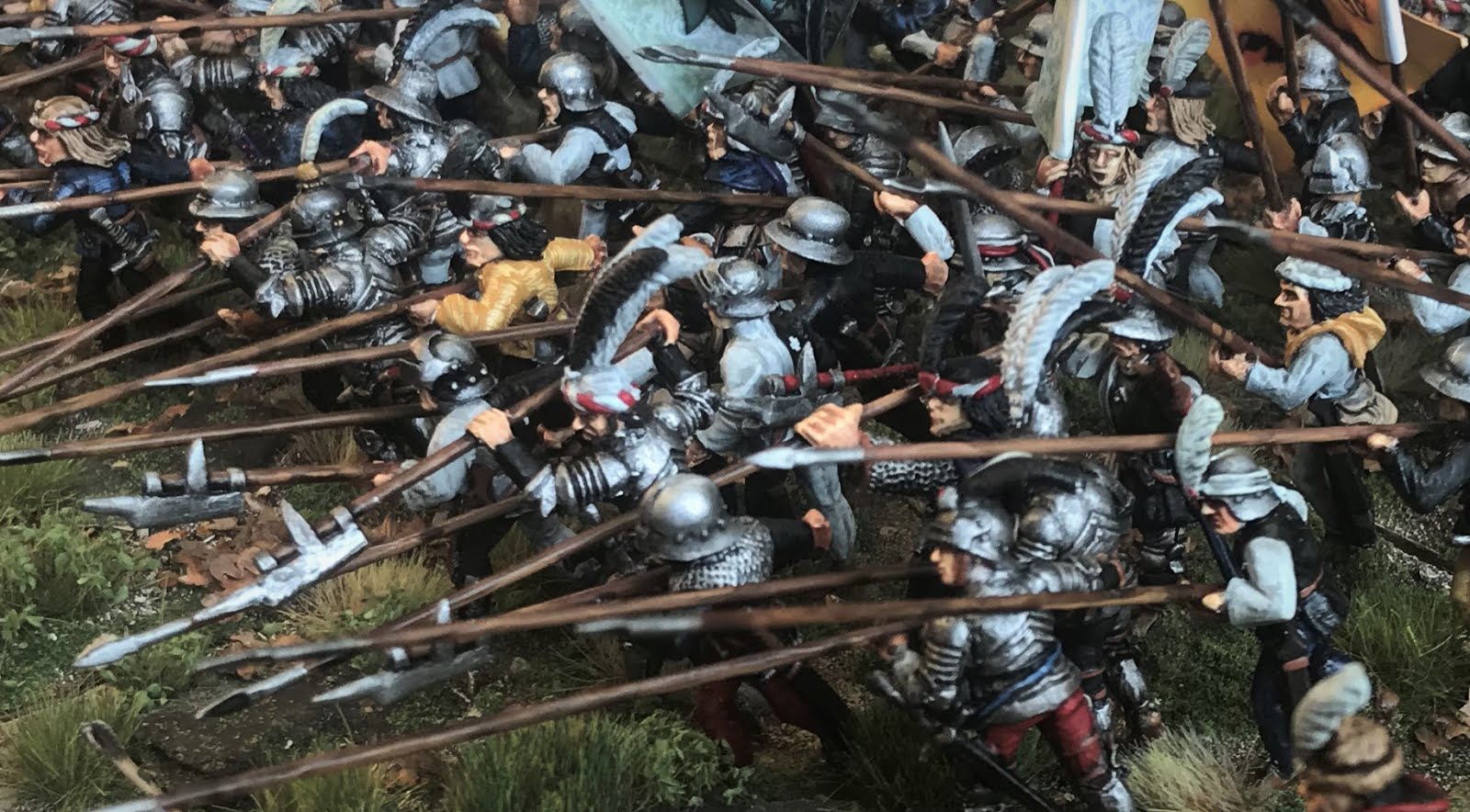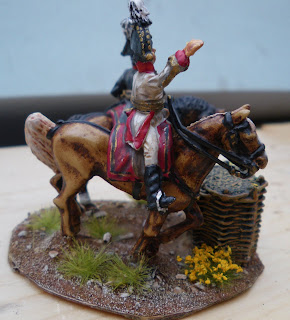Front Rank (left) Elite collectors series (right) undercoated with 2 light sprays of tan, in this case from Army painter
Work has taken over lately so my painting output has plummeted, however, a few of you have expressed an interest in how I paint horses using oils. This is a very fast method for getting an effective look on brown horses without too much fuss. It doesn't work for grey horses, and black horses....well, I just paint them black.
I did do some pics a while ago when I painted the Austrian dragoon regt but they were a bit pony....Pony?...oh dear, sometimes I'm just too funny...Pony...Geddit?...(For those of you not familar with rhyming slang...), anyway, these are from some more recent general figures.
So, the first pic shows 2 horses just after getting a couple of coats of tan paint. It really can be just about any brownish paint. Whatever you use for the base will ultimately dictate the predominate colour for the end horse. For most cavalry units I would do some in this pale tan, and some in a darker brown to get a bit of variation. The method doesn't change at all irrespective of what you use as a base (as long as its some sort of brown). Add in some blacks and greys and you get a mixed unit.
Once the basecoat is dry I block in the leather work and mane/tail in black. On the Elite horse on the left I've left the mane and tail to be coloured later.
Now the main event, applying the oil paint: I use good old Windsor & Newton Burnt Umber. You can get it in any art shop.It needs to be thinned with white spirit to a thickish wash sort of consistency. You will just have to experiment with this. Then, just brush it on. It doesn't matter if it slops over the black bits you've just painted, just make sure you get a decent covering.
Then, you need to leave it a little while. Depends a little on air/room temperature, but 5 mins is probably about right. When you first apply the oil it will look wet and glossy. Quite quickly it will begin to dry a little, and start to turn to a more satin finish. This is the moment when you need to wipe it off. For this you need a dry clean soft cotton. I use an old Tee-shirt.
This needs to be done fairly gently, just lightly rub over the flanks of the horse. Use steady, LIGHT touches, removing the top coat of the oils. This will leave the undercoat still stained a little, and also leave heavier deposits in the folds and defined muscles on the horse. I usually leave the front and underside of the horse. This adds a bit of shadow.
I've wiped the Elite horse on the left, but not the right hand nag. See how there is still a bit of paint in the folds and on the underside.
Now I've wiped the Front Rank horse on the left. This looks a bit pale. If you are not happy with the result the solution is a very simple one; repaint with oils, just slap on another coat, and repeat the process.
So, thats it after a single coat and gentle wipe. Looks alright. This horse I want to have a pale mane and tail so I've now blocked those in with Vallejo ivory.
The Ivory is now washed over with a burnt sienna wash.
Next, the black, reins, is dry brushed with Vallejo German Grey, which is pretty dark, and the tail/mane dry-brushed with ivory again.
The Front Rank horse after dry brushing on reins, mane and tail plus a further really light dry brush with a pale grey (Vallejo Neutral Grey). The brass is touched in with ..brass, and any white bits (blaze, socks) primed also in Neutral Grey before finishing in white. If you want to do eyes (and actually can paint horses eyes- most people, including me, can't) then fine, go ahead.
One final point: Don't attempt to use a spirit based varnish within 24 hours. Water based types aren't a problem, but spirit gloss varnishes put on too soon can be a bit disastrous. Leave it a day and its fine.
TA-Da!! the finished product with a general sat on it, a Front Rank gabion and some yellow flowers .
Free Counter










































